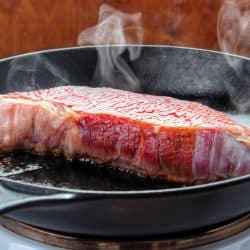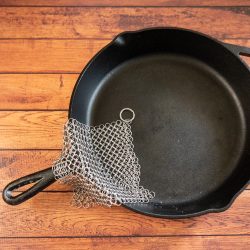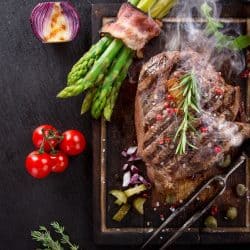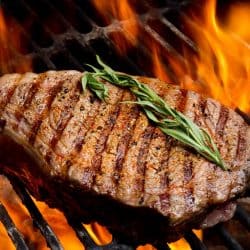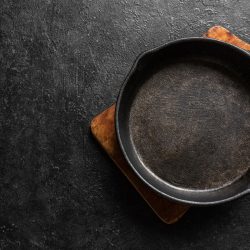Pan-frying a steak can be a little tricky to master. Especially if you are new to the world of cooking steak or if you are a master griller but are now on your off-grill season. Knowing best practices, such as when to use or not use a cover, is the key to perfecting your pan-fried steak. Rest assured, your steak is safe -- we have answers to some FAQ's on pan-frying steak right here.
You should not cover the pan when pan-frying a steak. Using a cover on a pan when cooking on the stove will steam cook the steak instead of frying it. This will change the desired outcome of a nice, pan-fried steak.
In addition to not using a cover, there are a few vital steps that can make or break your steak dinner. Read on to learn the ins and outs of pan-frying your steak.
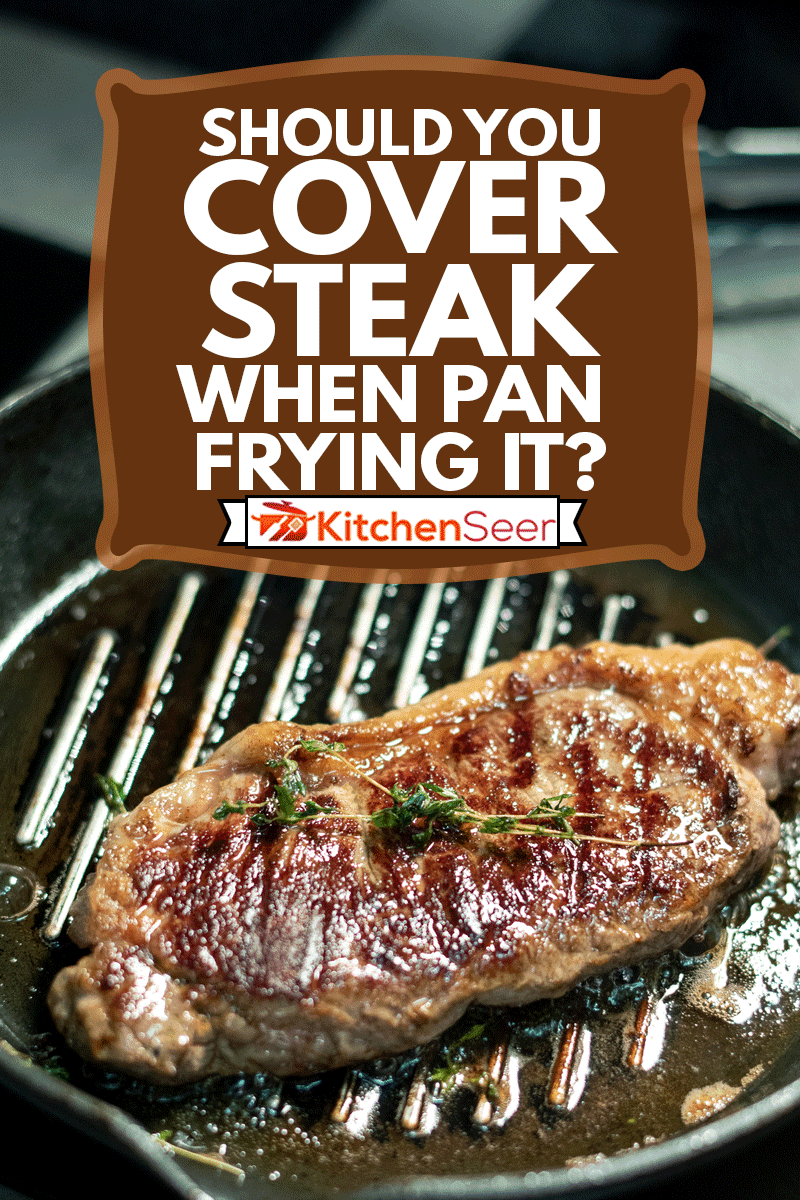
Best Practices for pan-frying a steak
Remove the chill
Allow your steak to sit out for a short period of time prior to cooking. This resting time will remove the refrigerated chill from the meat. Removing the chill will allow the meat to cook more evenly and will result in a juicier steak.
Allow your pan to warm
Ensure you allow the oil and the pan to reach the desired temperature before putting the steak on. If you can gauge the skillet's temperature, your skillet should be around 400 degrees Fahrenheit before the steak is placed. If you do not have a way to gauge this exactly, allow your skillet plenty of time to warm up before placing the oil.
You can use the water test method to know when it is time to add the oil.
Pick your cooking medium
The best option for pan-frying a steak is a refined cooking oil such as canola, peanut, or vegetable oil. These oils have a very high smoke point, allowing the pan to come up to a temperature of 400 degrees Fahrenheit - the necessary temperature to nicely sear a steak.
Dry the steak
In order for meat to brown and sear properly, moisture needs to be at a minimum. If a steak is very wet with juices from the package or from some kind of marinade, it is good to pat it dry with some paper towels before placing it in the hot pan. Doing so will lead to a crisper sear.
Many people also prefer to liberally cover each side of the steak in salt the night before. If you do this, pat the salt into the steak and allow it to sit uncovered in the fridge overnight. Remember to remove it from the fridge with enough time to remove the chill before you begin the cooking process.
Place your steak
Once you place your steak in the hot pan and oil, no matter how bad temptation might be nagging at you, try not to touch or move it. Allow at least 2 or 3 minutes per side for it to get a nicely browned sear. Flip, and allow to sear 2 or 3 minutes once again. If your steak is unevenly shaped, consider using a utensil to press the steak down to ensure even contact with the hot surface. However, try not to move the steak around in the pan. If you prefer your steak more well done, leave it on the heat for an extra minute or two per side.
Season to taste
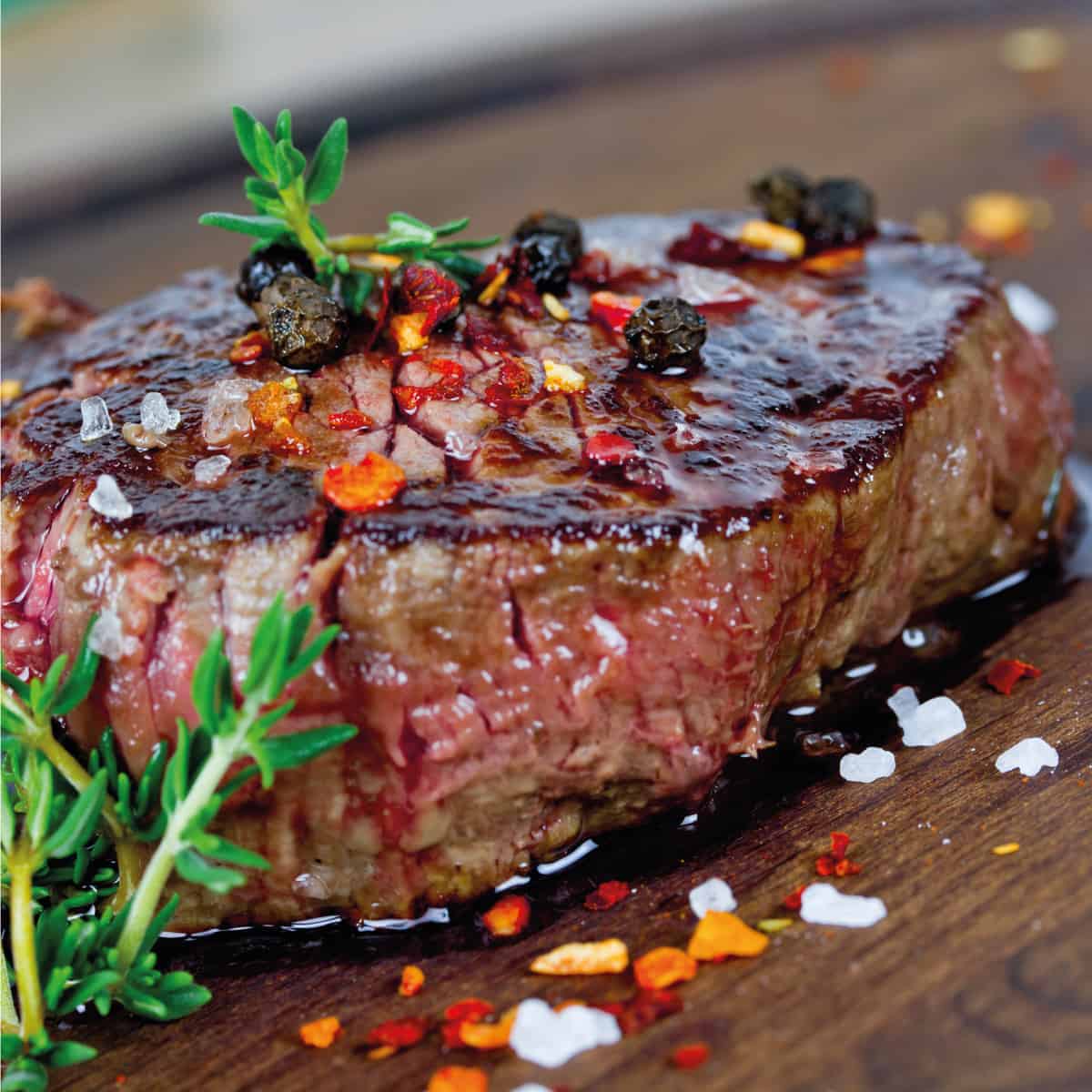
There are many different seasoning options and methods to use when attempting to perfect your steak seasoning. Salt will add flavor to the meat, so don't be afraid to add a bit more than you may normally do to your food. You will lose a lot of the seasoning in the pan, so it's okay to go just a little overboard.
Many people will add all of their seasonings to the steak before cooking it. This is a perfectly fine method and probably what most people will opt to do. However, as an alternative, you can also wait until after to season with things such as pepper.
Let it rest
Nearly as important as the cooking phase of searing a steak is a resting phase. It is vital to allow the steak to rest after searing for between 8 to 10 minutes. This will allow the steak to absorb the juiciness surrounding it, resulting in a much juicier and more tender steak. Once you remove your steak from the pan, place it on a plate or a platter and cover it with tin foil. Once it has rested for 8 to 10 minutes, it's ready! Enjoy!
For How Long Should You Pan Fry A Steak?
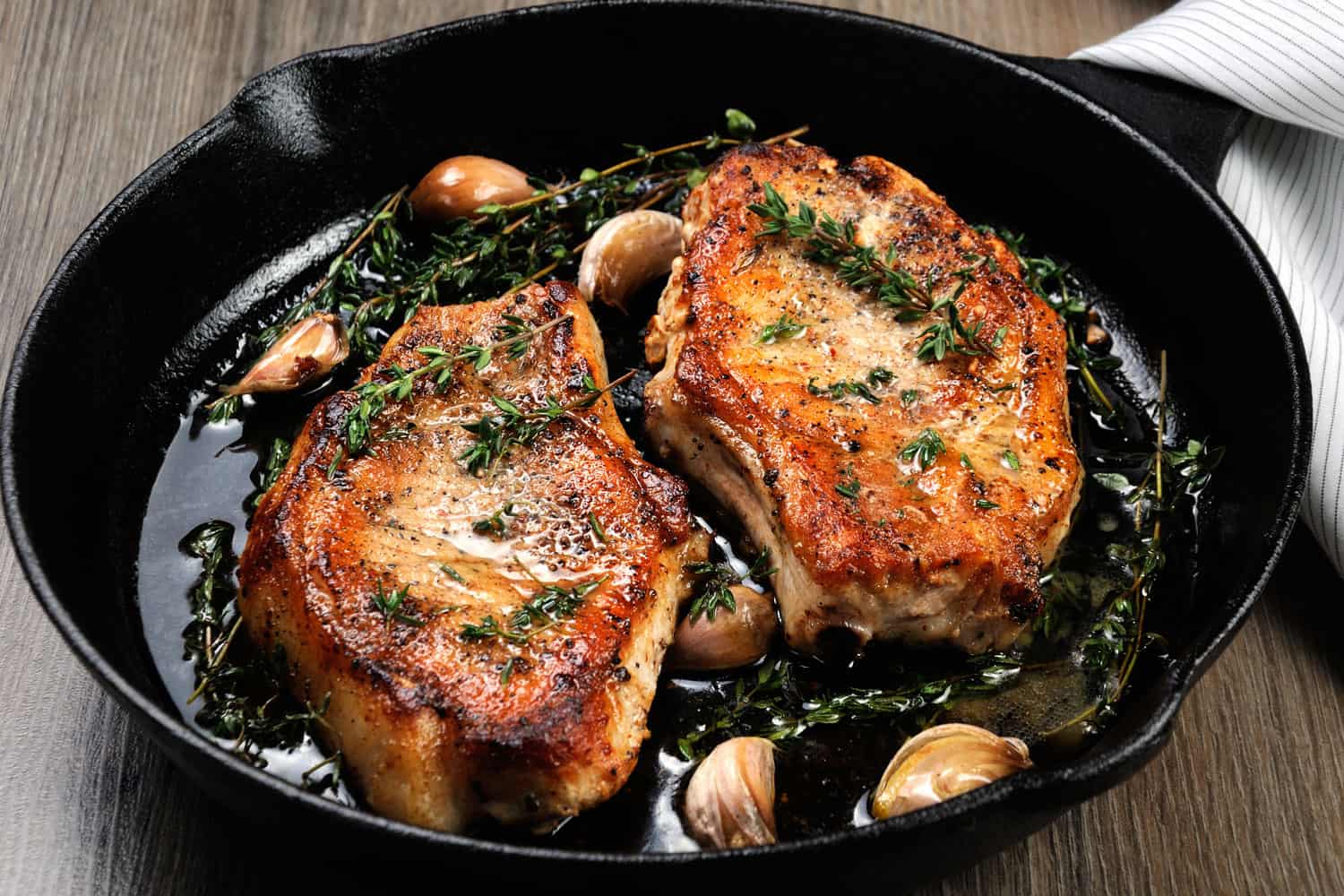
The length of time needed to pan-fry a steak will depend on the desired doneness and steak thickness. Generally, a steak of about medium thickness should take around 5 to 6 minutes in total searing both sides of the steak in the pan. This number might be a little more or a little less, depending on your desired doneness of the meat and the pan's temperature.
The most accurate way to determine when your steak is cooked the way you prefer is by using a meat thermometer. In order to gauge the correct temperature for your preferred doneness of a steak, use the reference list below:
- Rare: 125 - 130 degrees Fahrenheit
- Medium-rare: 130 - 135 degrees Fahrenheit
- Medium: 135 - 140 degrees Fahrenheit
- Medium-well: 145 - 150 degrees Fahrenheit
- Well done: 150 - 155 degrees Fahrenheit or above
Keep in mind that during the resting period, the steak will continue to cook. To compensate for this, remove the steak from the pan when it is a few degrees less than your desired temperature.
Check out this Digital Instant Read Meat Thermometer on Amazon by clicking here!
What Is The Best Kind Of Pan For Pan Frying Steak?
There are many great options for pans when frying a steak on the stove. Each type of pan will produce slightly different results. Personal preference will come into play when it comes to selecting the best kind of pan to use.
Cast iron
Cast iron is among the favorite type of pan to use for pan-frying a steak. It is popular because it can be used on all types of stovetops and can even be placed in the oven. They retain heat very well, which helps the caramelization process and creates a perfectly seared texture on the steak. Cast iron pans can be a bit of a chore to care for, so before making a selection, be sure to read up on how to care for cast iron skillets and how often to season them.
Click here to see this Cast Iron Grill Pan on Amazon!
Carbon fiber
Carbon fiber pans fall next in line because they offer many of the same benefits as a cast-iron pan does. They are available in many thicknesses and similarly allow for searing as a cast iron pan. Carbon fiber pans do not heat up as quickly as cast iron, but they are a great option.
Click here to see this Carbon Steel Skillet on Amazon.
Stainless steel
Stainless steel pans are another great option for their quick heat up and even heat conduction. The stainless steel material is also safe to use at the higher temperatures required when searing as steak. And as a bonus, clean-up is generally a breeze.
Click here to see this Stainless Steel Pan on Amazon!
Copper
Copper pans are also a great choice for cooking steak on a stove. Do be sure to make sure that the copper pan you're using is lined with stainless steel. Many copper pans are lined with tin. Tin does not reach the high temperatures needed for searing a steak properly. A tin lining will heat up very quickly but won't maintain the heat for long enough.
Click here to see this Copper Pan on Amazon!
Is It Better To Pan Fry With Butter Or Oil?
To pan-fry a steak to perfection, it is necessary to use a cooking medium with a very high smoking point. By choosing one of these mediums, it will allow your pan to heat up to the necessary temperature before producing mounds of smoke or resulting in a slightly burned taste. With that in mind, butter has a very low smoke point of 302 degrees Fahrenheit, as do unrefined oils, such as olive oil, avocado oil, and other nutrient-dense unrefined oils. Due to this, it is best to steer clear of these kinds of cooking mediums when searing a steak.
Refined oils such as vegetable, peanut, or canola oil are a great solution as these oils have a higher smoking point betweeen 400 and 450 degrees Fahrenheit. This is the right neighborhood to be in when considering which oils to sear a steak with. To learn more about which oil is best for searing a steak, be sure to check out our article by clicking here.
If you're really in the mood for a buttery-fried steak, an additional alternative to oils and butter is ghee. Ghee comes with a shockingly high smoke point that makes it ideal for things such as searing steak. The whopping 485 degrees Fahrenheit smoke point is more than enough to sear your steak to perfection.
How Long Should Steak Sit Before Cooking?
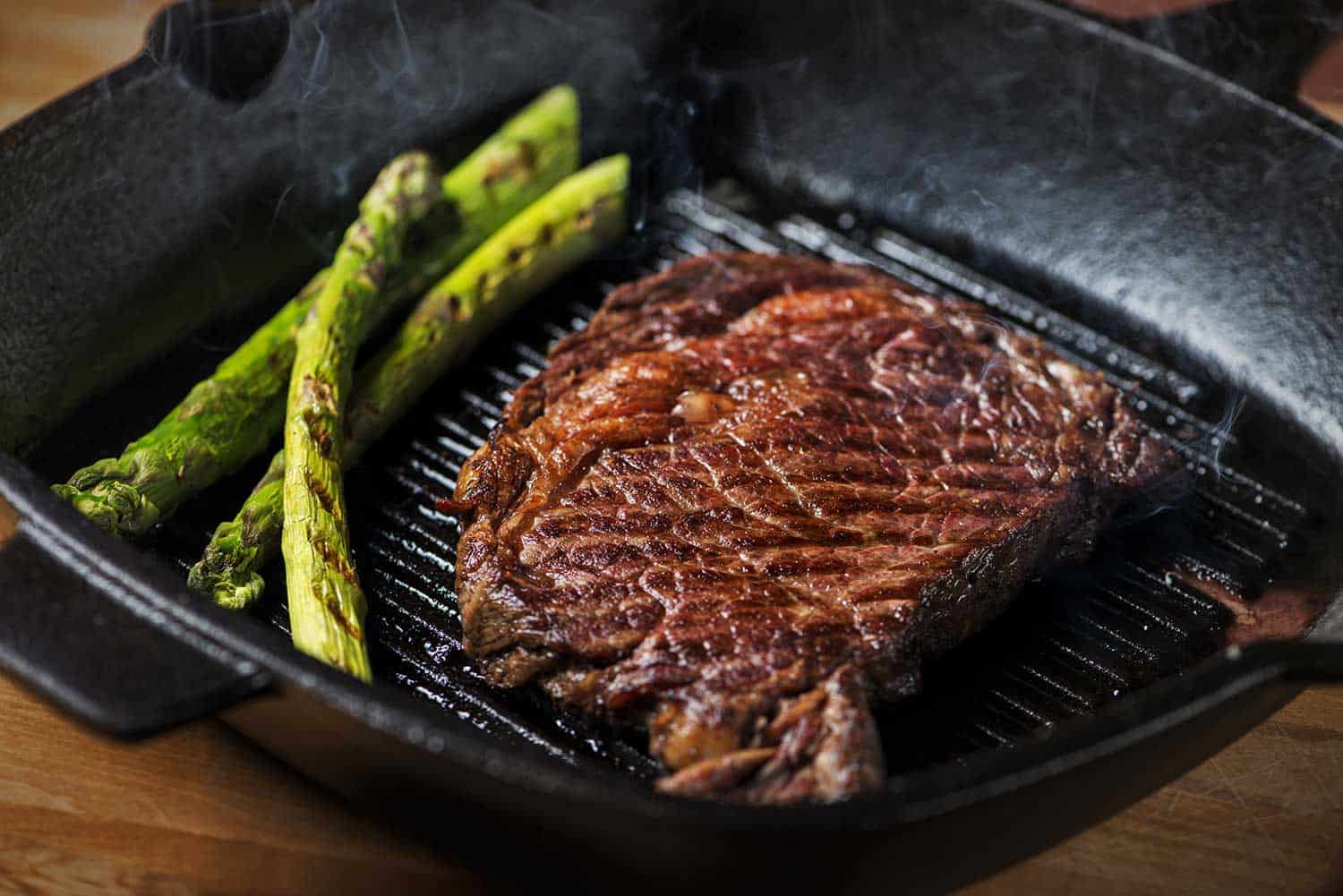
For the most optimal outcome, you should allow it to rest at room temperature for up to 1 hour before cooking. Doing so will remove the chill from the meat. With less chill, it is able to cook more evenly and will result in a juicier steak.
In Closing
You don't want to use a cover when pan-frying, as this will change the outcome of your pan-fried steak. A cover creates steam, which changes how the steak is cooked. Follow the best practices we've provided above, and give yourself a few practice tries. You'll be making professional-grade steaks in no time.






